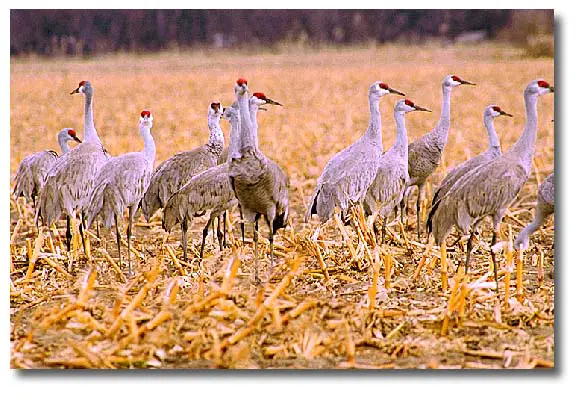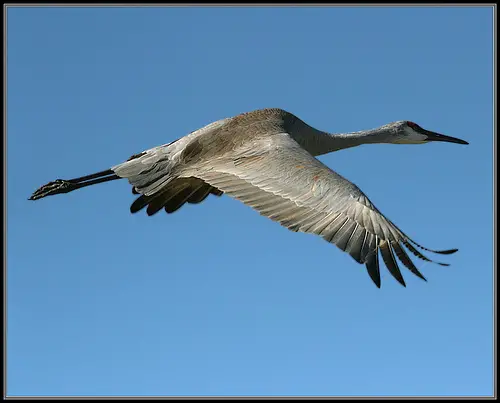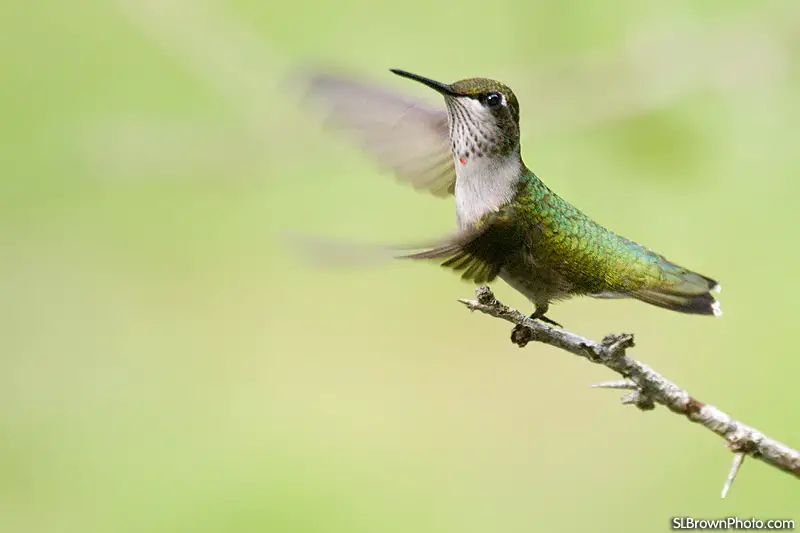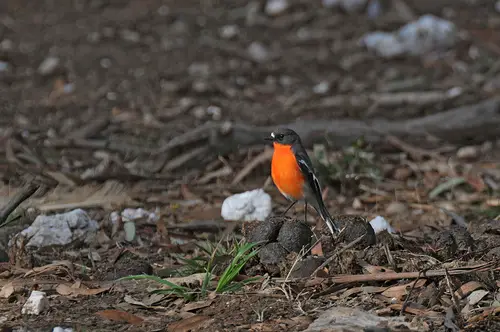Sandhill Crane
The Sandhill Crane is a long, elegant wader. Just like other cranes, this bird is known for their spectacular mating dances. During this fascinating performance, loud calls, which sound like horn tootles, can be heard. Sandhill Cranes are also incredible fliers, as they have been observed to pass Mount McKinley, which is more than 6000 m tall.
These birds reach are 89 – 122 cm long on average and their wing span can reach 2 metres. Their flock is usually gray, with hints of white, while the top of the head is red. Sandhill Cranes inhabit most parts of Canada, while spending their winter more to the South. They prefer open territories with small lakes and rivers, but they can live in a variety of sceneries, from swamps to desolate savannas.
Sandhill Cranes are social birds that live in groups, and in these groups pairs of the opposite sex form, and stay together for the rest of their lives. Sometimes in early mornings, the pair flies a few kilometres in search of food. During this “pasture”, the cranes perform a ritual dance. The reason for this behaviour is still a mystery to ornithologists. It is possible that it helps the pair to strengthen their relationship.
Being migratory birds, the cranes fly to warmer areas when winter comes. They fly in typical spikes, moving to Southern parts of the USA and Mexico. They travel the same routes every year, and during their resting times, multiple thousand crane voices can be heard. There are a few small populations in Mississippi, Florida, Alabama and Cuba that are not migratory and stay at one place all year round.
The bird’s diet varies, depending on the season and food available. The crane’s favourite food is roots and tubers, while they won’t pass leaves, sprouts or fruit either. When near water sources, the Sandhill Crane will sometimes also catch small crustaceans, fishes, snails and frogs – the bird’s large, sharp beak is an excellent weapon, which the crane manages to use with great agility and speed.
Sandhill Cranes nest in isolated areas, far out of human reach. Typically, the nests are built in bulrush growths, where the female lays two white eggs. Both the parents take care of the eggs for 30 days, and the young birds can fly a few weeks after hatching. The parents take keep feeding the hatchlings for about 70 days, and the cranes become fully mature after one year, although they usually stay with their parents until the next migration. In the next few years, the young cranes begin looking for a partner.
Despite many prohibitions, farmers often shoot these birds because they tend to feed on farmland vegetation. Still, Sandhill Cranes maintain quite a large population and they are not currently facing extinction.




